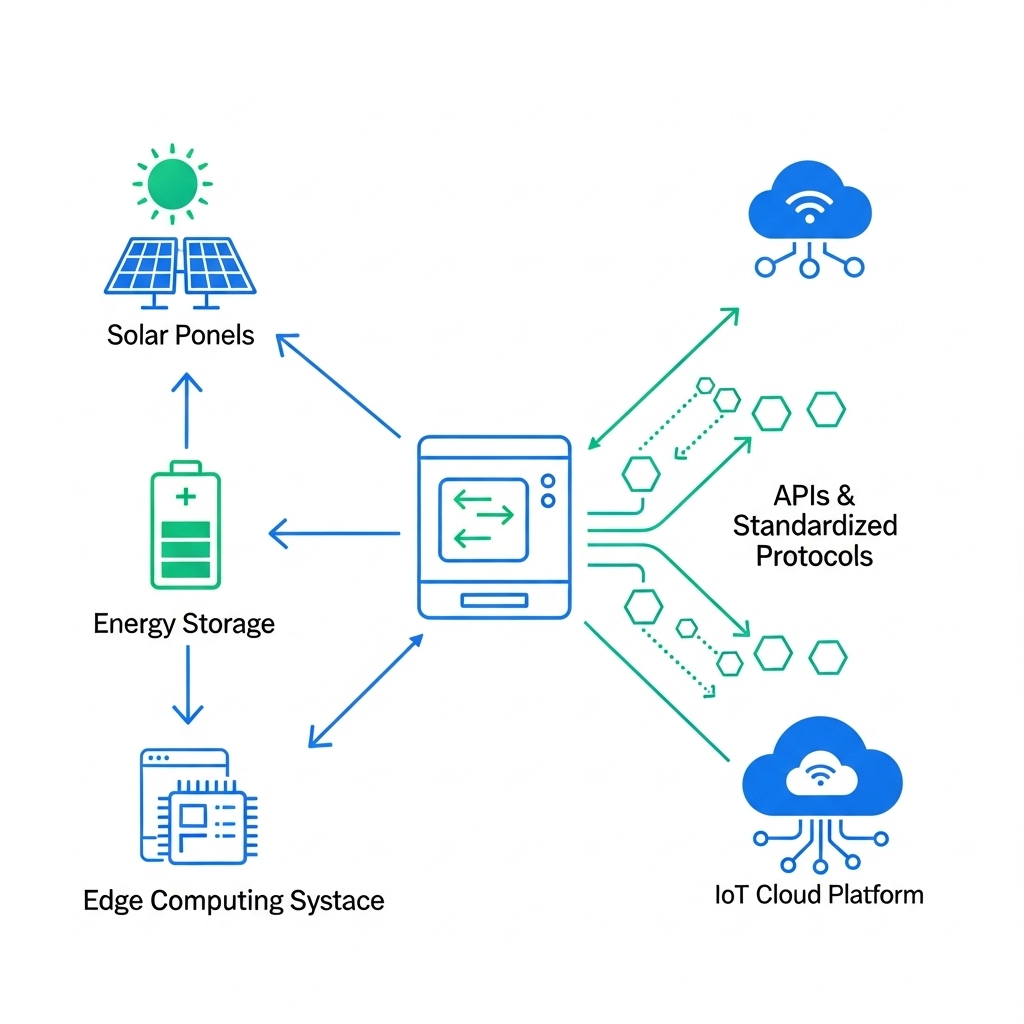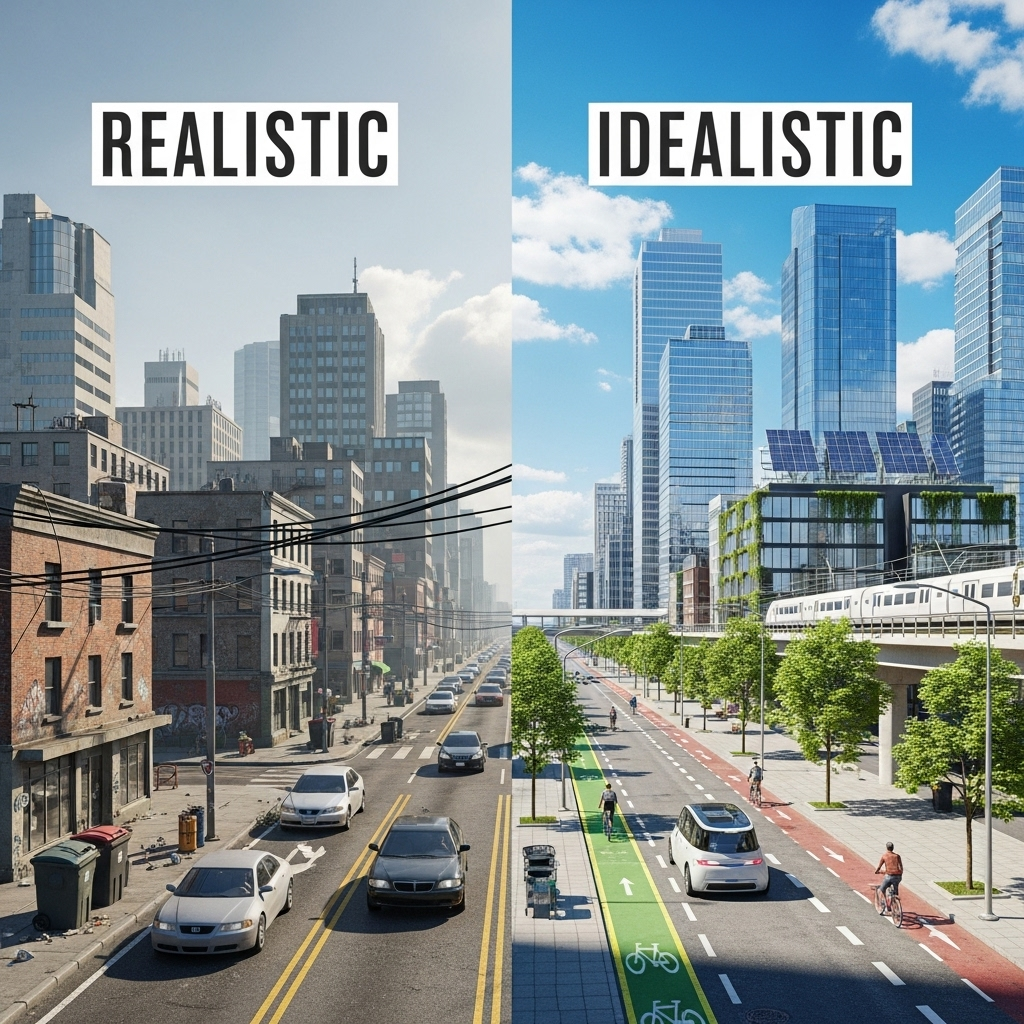Your solar inverter acts as the brain of your photovoltaic (PV) system, converting DC power from your panels into usable AC power for your home. But the IoT cloud platform is its central nervous system. It provides the data, insights, and control you need to truly manage your energy production. Choosing the right IoT cloud monitoring solution is critical for maximizing your system's efficiency and return on investment. This review offers a clear framework for evaluating the best IoT clouds for solar inverters, helping you make an informed decision.
Core Functions of a Solar Inverter IoT Platform
A robust solar inverter IoT platform does more than just display how much power you are generating. It offers a suite of tools for comprehensive system management. Understanding these core functions helps you identify what features are most valuable for your specific needs.
Real-Time Monitoring and Data Visualization
The most fundamental feature of any IoT cloud monitoring for solar is the ability to see what your system is doing in real time. This includes tracking key metrics such as:
- PV Generation: How much power your solar panels are producing at any given moment.
- Energy Consumption: The amount of electricity your home or business is using.
- Grid Interaction: Whether you are exporting surplus power to the grid or importing power from it.
- Battery Status: For systems with energy storage, this shows the battery's state of charge (SoC), and whether it is charging or discharging.
A quality platform presents this information on an intuitive dashboard, often with flow diagrams that make it easy to visualize energy movement between your panels, battery, home, and the grid.
Performance Analytics and Reporting
Beyond live data, a powerful platform allows you to analyze historical performance. You can compare energy production over days, months, or years to identify trends or potential issues. For instance, a gradual decline in output could signal that your panels need cleaning or maintenance. These platforms can generate automated reports, which are useful for tracking your system's financial performance and verifying your savings on electricity bills. This analytical capability transforms raw data into actionable intelligence.
Remote Control and Configuration
For installers and tech-savvy homeowners, remote access is a game-changer. Top-tier cloud platforms for solar inverters allow authorized users to perform critical tasks from anywhere. This can include updating the inverter's firmware to access new features, adjusting grid settings, or remotely diagnosing a fault. This capability significantly reduces the need for on-site service calls, saving both time and money.
Key Criteria for Evaluating IoT Cloud Platforms
With a variety of platforms available, it is important to evaluate them based on a consistent set of criteria. The right choice depends on your long-term goals, system complexity, and security requirements.
Scalability and Interoperability
Scalability refers to the platform's ability to grow with your needs. If you are a homeowner, a platform designed for a single system may be sufficient. If you are an installer managing hundreds of client systems, you need a platform built to handle a large fleet of devices efficiently. Interoperability is equally important. Some platforms are proprietary, working only with one brand of inverter. Others are built on open standards, allowing you to monitor hardware from multiple manufacturers. According to the International Energy Agency's report, System Integration of Renewables, adopting internationally recognized standards is a foundational step for the effective deployment of renewable energy technologies. This principle applies directly to monitoring platforms, where open standards prevent vendor lock-in.
Security and Data Privacy
Connecting any device to the internet introduces security considerations. A secure IoT platform is non-negotiable. Look for platforms that offer end-to-end encryption, secure user authentication (like two-factor authentication), and a clear data privacy policy. Your energy data reveals patterns about your lifestyle, so it must be protected. The U.S. Department of Energy highlights the criticality of robust security measures. In one success story, they detail how a low-cost cybersecurity device using data diodes can physically block inbound cyberattacks, a principle that leading cloud platforms are adopting to protect critical energy infrastructure.
User Experience (UX) and Mobile Access
A platform's power is diminished if it is difficult to use. A clean, logical user interface is vital for both desktop and mobile applications. The mobile app should provide all the essential monitoring and alert functions, allowing you to check your system's status on the go. Customizable alerts for system faults or performance anomalies ensure you are immediately aware of any issues that require your attention.
Comparing Platform Architectures: Proprietary vs. Open
IoT platforms for solar inverters generally fall into two categories: proprietary systems developed by inverter manufacturers, and open platforms designed to work with a variety of hardware. Each approach has distinct advantages and disadvantages.
The Proprietary (Walled Garden) Approach
Proprietary platforms are created by the same company that makes your inverter. This ensures seamless integration and a single point of contact for support. The user experience is often very polished and straightforward. However, this approach can lead to vendor lock-in, limiting your ability to add components from other brands to your system in the future.
The Open Platform Approach
Open platforms are designed for flexibility. They use standard communication protocols to connect with hardware from numerous manufacturers. This gives you the freedom to mix and match components to build a system that perfectly suits your needs. While the initial setup can sometimes be more complex, the long-term flexibility and customization potential are significant benefits for those who want more control over their system's ecosystem.
| Feature | Proprietary Platforms | Open Platforms |
|---|---|---|
| Flexibility | Low (Tied to one brand) | High (Supports multiple brands) |
| Ease of Use | High (Seamless integration) | Moderate to High (May require configuration) |
| Support | Centralized (Single point of contact) | Potentially Fragmented (Varies by platform) |
| Customization | Limited | Extensive |
| Future-Proofing | Dependent on one manufacturer's roadmap | Adaptable to new technologies and brands |
Advanced Features and Future-Proofing Your Choice
The best IoT solar inverter cloud platforms are already looking to the future, incorporating advanced technologies to add even more value.
AI-Powered Analytics and Predictive Maintenance
Leading platforms are beginning to use artificial intelligence (AI) and machine learning to offer predictive insights. By analyzing vast datasets, these systems can forecast your solar production based on weather predictions or optimize battery charging schedules to take advantage of time-of-use electricity rates. They can also detect subtle anomalies in performance that may indicate an impending component failure, enabling predictive maintenance before a problem causes downtime.
Integration with Smart Homes and Virtual Power Plants (VPPs)
A truly smart energy system integrates with other devices. Modern IoT platforms provide Application Programming Interfaces (APIs) that allow them to communicate with smart home ecosystems, EV chargers, and other high-load appliances. This enables holistic energy management. Furthermore, advanced platforms are enabling new grid services. The International Renewable Energy Agency (IRENA) discusses how aggregators use such technologies to create virtual power plants, as detailed in their Electricity Storage Valuation Framework. By choosing a capable platform, you position your system to potentially participate in these programs, providing grid stability and creating new revenue streams. To get the most out of these advanced features, your system's hardware must also be up to the task. Understanding key metrics is crucial, and you can find a detailed breakdown in this ultimate reference for solar storage performance.
Your System's Digital Command Center
Selecting an IoT platform is a decision that impacts the daily management and long-term value of your solar energy system. It is much more than a simple monitoring dashboard; it is a powerful tool for optimization, maintenance, and control. By evaluating platforms based on their core functions, security, scalability, and forward-looking features, you can choose a solution that not only meets your current needs but also adapts to the future of energy. The right platform empowers you to take full control of your energy production, maximize your savings, and secure your path toward energy independence.
Frequently Asked Questions
What data can I see on a solar inverter IoT platform?
Most platforms show real-time and historical data for solar power generation, home energy consumption, battery state of charge, and power being sent to or taken from the grid. Advanced platforms may also show individual panel performance, temperature data, and detailed system health diagnostics.
Do I need a constant internet connection for my solar inverter to work?
No, your solar inverter will continue to operate and produce power even without an internet connection. However, an internet connection is required for the IoT cloud platform to collect data and for you to access remote monitoring, analytics, and control features.
How secure are these solar IoT cloud platforms?
Reputable platforms use strong security measures, including data encryption for information in transit and at rest, secure login procedures like two-factor authentication, and regular security audits. It is important to choose a provider that is transparent about its security practices.
Can I use one platform to monitor inverters from different brands?
This depends on the platform. Proprietary platforms from a specific manufacturer typically only support their own hardware. However, 'open' or third-party platforms are designed with interoperability in mind and can often monitor inverters and other components from multiple different brands, giving you a unified view of your entire system.





Leave a comment
All comments are moderated before being published.
This site is protected by hCaptcha and the hCaptcha Privacy Policy and Terms of Service apply.